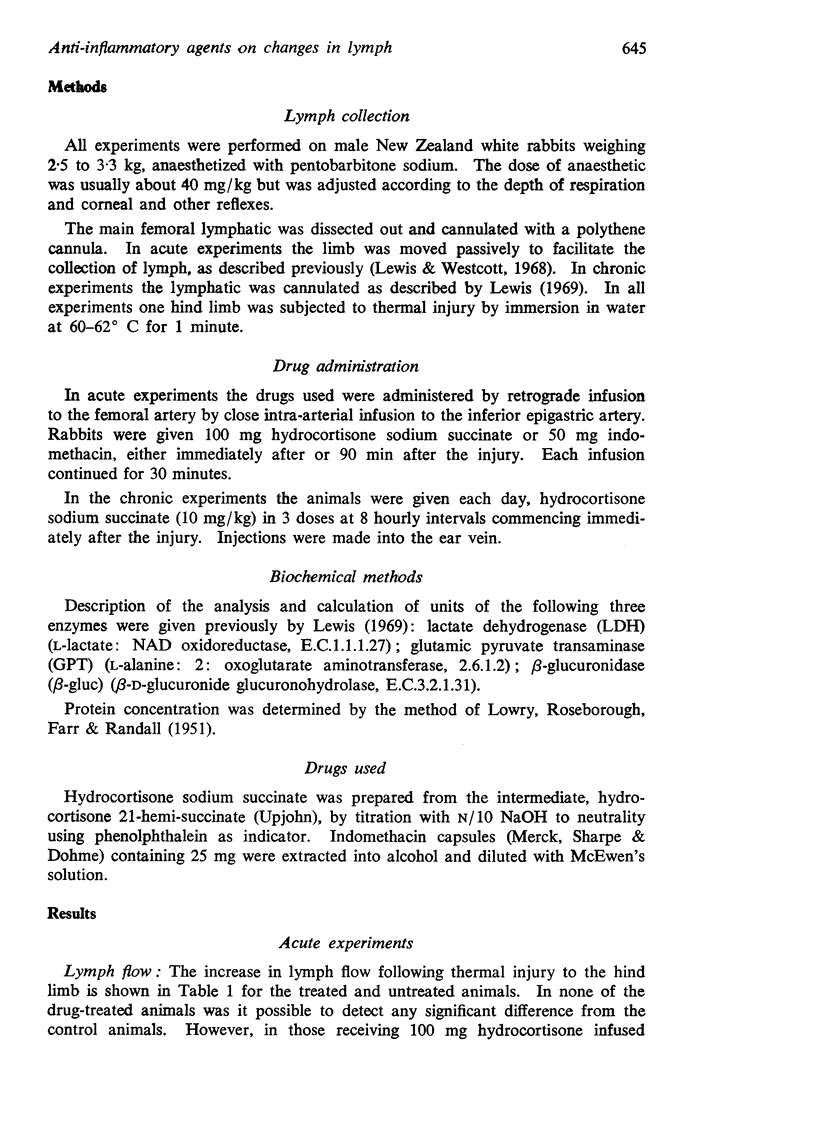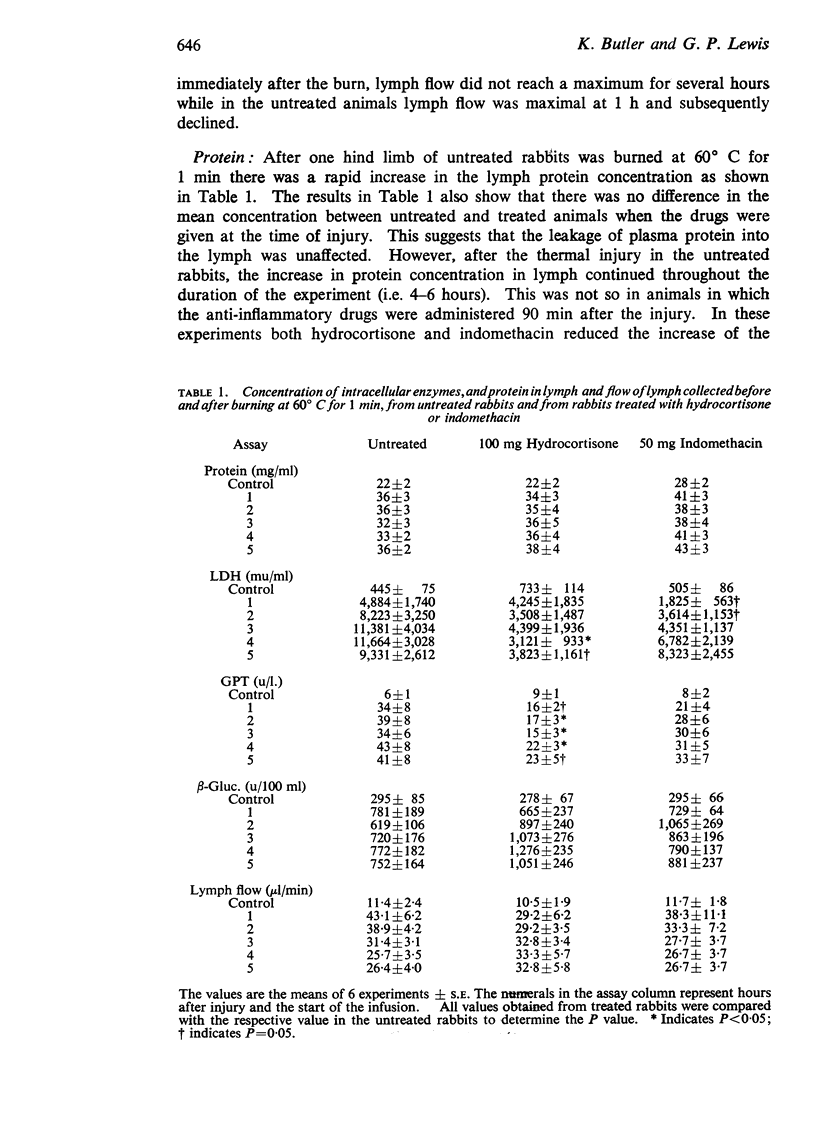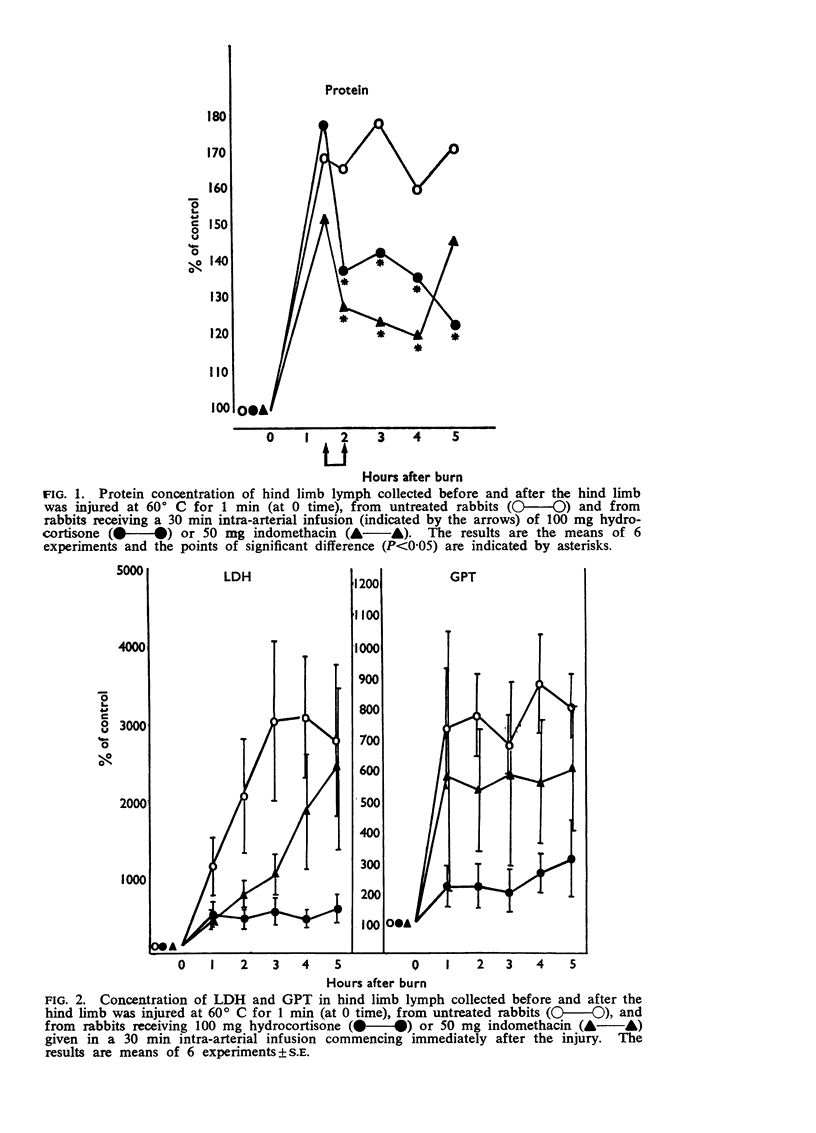Abstract
1. Lymph was collected directly from the hind limbs of rabbits anaesthetized with pentobarbitone and from unanaesthetized rabbits before and after one hind limb was injured by immersion in water at 60° C for 1 minute.
2. Rabbits were treated with anti-inflammatory agents hydrocortisone or indomethacin which, in acute experiments, were infused close-arterially into the limb either at the time of the injury or 90 min later. In chronic experiments hydrocortisone was given intravenously three times a day.
3. When given at the time of the injury both drugs reduced the subsequent mean increases in the lymph of the intracellular enzymes lactate dehydrogenase and glutamic pyruvate transaminase but not those of β-glucuronidase and protein; whereas when given 90 min after the injury only the increase in lymph protein concentration was reduced.
4. The results indicate that these anti-inflammatory agents probably inhibit the second phase of increase in vascular permeability which occurs after injury and in addition, reduce the leakage of intracellular protein by a non-specific effect on membrane permeability.
5. The pronounced variability of the response of individual animals and the complexity of the experiments preclude the method as a suitable model for the estimation of anti-inflammatory activity.
Full text
PDF






Selected References
These references are in PubMed. This may not be the complete list of references from this article.
- BURKE J. F., MILES A. A. The sequence of vascular events in early infective inflammation. J Pathol Bacteriol. 1958 Jul;76(1):1–19. [PubMed] [Google Scholar]
- LOWRY O. H., ROSEBROUGH N. J., FARR A. L., RANDALL R. J. Protein measurement with the Folin phenol reagent. J Biol Chem. 1951 Nov;193(1):265–275. [PubMed] [Google Scholar]
- Lewis G. P. Changes in the composition of rabbit hind limb lymph after thermal injury. J Physiol. 1969 Dec;205(3):619–634. doi: 10.1113/jphysiol.1969.sp008986. [DOI] [PMC free article] [PubMed] [Google Scholar]
- Lewis G. P. Intracellular enzymes in local lymph as a measure of cellular injury. J Physiol. 1967 Aug;191(3):591–607. [PMC free article] [PubMed] [Google Scholar]
- Lewis G. P., Wawretschek W. A. Effect of thermal injury on the kinin system in rabbit hind limb lymph. Br J Pharmacol. 1971 Sep;43(1):127–139. doi: 10.1111/j.1476-5381.1971.tb07162.x. [DOI] [PMC free article] [PubMed] [Google Scholar]
- SEVITT S. Early and delayed oedema and increase in capillary permeability after burns of the skin. J Pathol Bacteriol. 1958 Jan;75(1):27–37. doi: 10.1002/path.1700750105. [DOI] [PubMed] [Google Scholar]
- WEISSMANN G., THOMAS L. THE EFFECTS OF CORTICOSTEROIDS UPON CONNECTIVE TISSUE AND LYSOSOMES. Recent Prog Horm Res. 1964;20:215–245. [PubMed] [Google Scholar]
- Winsey N. J. Protein changes in hind limb lymph following injury. Br J Pharmacol. 1972 May;45(1):137P–138P. [PMC free article] [PubMed] [Google Scholar]


